Best poster presenters awards
Three poster presenters have been awarded the prize of the best presenter (one for each session)
- Poster Session 1 : Hilary Wakefield : Prenatal nicotine exposure and intrinsic properties of neonatal hypoglossal motor neurons
- Poster Session 2 : Silvia Muceli, Negro F, Jensen W, Yoshida K , Poppendieck W, Doerge T, Farina D: Sampling populations of motor units in humans with novel thin-film electrodes
- Poster Session 3 : Cassie Mitchell: ALS Mechanisms, Dynamics, and Treatment: Analytical and Modeling Predictions
Jury : Randall Powers, Jane Butler, Inge Zijdewind, Roger Enoka, Christiane Rossi-Durand, Kelvin Jones, CJ Heckman, Jean-François Perrier, Didier Orsal and Daniel Zytnicki.
Poster Session 1 (Friday 9, 13:30 - 15:00)
- F1: Hans Van Brederode and Albert J Berger: Firing properties of GAD67-GFP+ interneurons in the Nucleus of Roller: A possible source of inhibitory input to hypoglossal motoneurons
- F2: Walter Babiec: Induction of long-lasting changes in motoneuronal excitability
- F3: Karin Persson: Calcium imaging of the ventral brainstem surface in newborn mice reveal a novel population of rhythmic cells located medial to the parafacial respiratory group
- F4: Antonny Czarnecki: Giant currents initiate bursts of action potential during spontaneous rhythmic activity in early embryonic spinal cord.
- F5: Amélie Fréal: An in vivo approach for analyzing the molecular control of motoneuron differentiation in the mouse embryo
- F6: Chiara Rigato: Microglial cells invade the embryonic mouse spinal cord at the onset of the spontaneous electrical activity
- F7: Hilary Wakefield : Prenatal nicotine exposure and intrinsic properties of neonatal hypoglossal motor neurons
- F8: Mingchen Jiang: The impact of short-term plasticity in input-output function of spinal motor system of adult mice
- F9: Noboru Iwagaki: Modulation of Spinal Locomotor Networks and Motoneuron Activity by Group I mGluR Activation
- F10: Sandrine Bertrand: Commissural muscarinic transmission induces a synapse-specific short-lasting potentiation of commissural glutamatergic inputs in lumbar motoneurons
- F11: Sheyla Mejia-Gervacio: Modulation of glutamatergic inputs on motoneurons
- F12: Catherine Dunford: Modulation of locomotor-related motorneuron output by nitric oxide
- F13: Alain Frigon: Intra-motoneuronal responses to hip and ankle muscle afferent stimulation during spontaneous fictive locomotion in the adult cat
- F14: Kevin Power: Spinal motoneurone excitability is enhanced during fictive locomotion in the adult decerebrate rat
- F15: Wendy Bautista: Functional electrical synapses in adult mouse spinal cord: a new player in presynaptic inhibition
- F16: Kathy Quinlan: Comparison of action potential-evoked Ca2+ entry throughout dendritic processes in spinal motoneurons
- F17: Ann Revill: Evaluation of persistent inward currents using paired motor-unit recordings in human genioglossus muscle
- F18: Jennifer Stephenson: Factors influencing the magnitude of PIC estimates in the human tibialis anterior muscle
- F19: Paul Hodges: Changes in motoneurone discharge with pain
- F20: Kylie Tucker: Investigating the mechanisms for altered motoneurone recruitment during pain
- F21: Serajul Khan: Effect of experimental muscle pain on voluntary activation of human biceps brachii muscle
Poster Session 2 (Saturday 10, 13:00 - 14:30)
- S1: Robertas Guzulaitis: Spinal network generating swim like activity
- S2: Rokas Buisas: Estimation of gain of spinal motoneurons
- S3: Tuan Bui:dI3 interneurons mediate disynaptic excitation of motoneurons from cutaneous afferents
- S4: Berg Rune: Precision in muscular control: Gain modulation in spinal motoneurons by sub-threshold Vm-fluctuations.
- S5: Peter C. Petersen: Neuronal Population coding in Vertebrate CPG: A Multi-unit Study during functional motor activity
- S6: Mikkel Vestergaard: Population activity in a spinal motor network monitored with extra-cellular multi-electrode recordings during multiple functions and during local drug delivery
- S7: Piotr Krutki: Influence of a whole-body vibration training on motor unit properties in rat muscle
- S8: Hanna Drzymala-Celichowska: Differences in motor unit properties between male and female rat medial gastrocnemius
- S9: Matthew Raymond Holmes: Discharge characteristics of motor units at recruitment in older adults during a sustained contraction
- S10: Billy Luu: Triceps surae motor unit activity during balance control
- S11: Chris Dakin: Lower limb motor neuron unit responses to galvanic vestibular stimulation during human standing balance
- S12: Annie Butler: Muscle weakness impairs proprioceptive function
- S13: Utku Yavuz: Gender effects on the electromechanical delay
- S14: Sibel Atis: Modulation of human jaw reflexes
- S15: Stéphane Baudry: Controlling limb position during a fatiguing contraction involves specific modulation of Ia presynaptic inhibition
- S16: Jakob Lund Dideriksen: Charateristics of the motor unit spike trains that influence force variability at fatigue
- S17: Annie Butler: Muscle weakness impairs proprioceptive function
- S18: Muceli S, Negro F, Jensen W, Yoshida K , Poppendieck W, Doerge T, Farina D: Sampling populations of motor units in humans with novel thin-film electrodes
- S19: Minetto MA, Holobar A, Botter A, Ravenni R, Farina D: Motor unit discharge properties during muscle cramps electrically-elicited after peripheral nerve block
- S20: Valérie Achache, Dorothy Barthelemy , Nicolas Roche , Alexandra Lackmy , Antoine Gastal , Véronique Quentin , Véronique Marchand-Pauvert & Rose Katz: Transmission within a propriospinal pathways implied in locomotion in cerebral palsy patients
- S21: Nicolas Roche, V Achache, A Lackmy, P Pradat-Diehl, JC Lamy JC and R Katz: Effects of afferent stimulation rate on inhibitory spinal pathways in hemiplegic spastic patients
- S22: Matthieu Chardon: Estimation of input output properties of spastic motoneurons using a linear actuator applied to the bicipital tendon
- S23: Sabine Giesebrecht: Practice of ballistic finger movements increases responses to stimulation of the corticospinal axons
- S24: Ulla Vig Nissen: Rhythmic movement of one leg elicits modulation of spinal reflexes in the other leg
- S25: Estelle Drobac: Altered spinal reflexes and reduced proprioceptive inputs on SMA-Δ7 lumbar neonatal motoneurons
Poster Session 3 (Monday 12, 13:15 - 14:30)
- M1: Amandine Duflocq: Characterization of the AIS of motoneurons and identification of para- and juxtapara-AISs.
- M2: Barbara Le Bras: Molecular assembly of the axonal initial segment of motoneurons during mouse embryonic development
- M3: Fadhila Allek: Differential distribution of Nav channel isoforms in motoneurons: involvement of Nav beta subunits.
- M4: Florence cotel, Rune Berge, Morten Smith & Jean-François Perrier: Serotonin induces central fatigue by inhibiting a Na+ current at the axon initial segment of motoneurons.
- M5: Kim Hojeong: Realistic reduced-modelling approach for simulations of the motor neuron pool
- M6: Sherif M. Elbasiouny, Julien Amendola, Jacques Durand, and CJ Heckman: The changes in electrical and morphological properties of mSOD1 motoneurons and their effects on the dendritic processing of synaptic inputs
- M7: Kathy Quinlan: Advanced postnatal development in a mouse model of ALS
- M8: Andrea Fuchs, Bernhard Keller, Burkhard Schuetz and Jochen Roeper: Activity dependent slowing of calcium clearance but no overexcitability in motoneurons of the endstage SOD1G93A ALS mouse
- M9: Jenna Schuster: Prolonged Riluzole administration has the same effect on wild type and SOD1G93A motoneurons
- M10: Anton A Filipchuk, SM Korogod, SM and J Durand: Abnormal postnatal development of dendritic arborizations of spinal motoneurons in the SOD1 mouse model of ALS
- M11: Arnaud Pambo-Pambo, Anton Filipchuk, Jacques Durand and Jean-Patrick Guéritaud: Early postnatal alterations of lumbar motoneurons in SOD1-*G93A* low expressor line mutant mice.
- M12: Cassie Mitchell: ALS Mechanisms, Dynamics, and Treatment: Analytical and Modeling Predictions
- M13: Lissa Herron: Changes in cholinergic synapses on spinal motoneurons during disease progression in an animal model of Amyotrophic Lateral Sclerosis
- M14: Chris Thompson: Contributions of motoneuron excitability to volitional force-generation in human incomplete spinal cord injury
- M15: Lucía Pérez, Omar Trujillo-Cenóz and Raúl E. Russo: Plasticity of lumbar motoneurons during the regeneration of the turtle spinal cord
- M16: Philippe Magown: Use of embryonic stem cell-derived motoneuron transplantation to ameliorate motor functions
- M17: Peter Chipman: The Neural Cell Adhesion Molecule Promotes Reinnervation of Partially Denervated Mouse Muscle
- M18: Mengliang Zhang: Upregulation of serotonin 2A receptors after acute and chronic spinal transection of rats: an immunohistochemical study
- M19: Jan Celichowski: Influence of the spinal cord total transection and hemisection on motor unit contractile properties
- M20: Renée D. Theiss, John R. Schieber, Joven T. Cerdenia, Nina L. Suresh, Matthieu K. Chardon, and W. Zev Rymer: Do persistent inward currents contribute to hyperexcitable mono-synaptic reflexes in individuals with chronic, incomplete spinal cord injury?
- M21: Katie Gant: Long-term EMG records: motor unit and muscle activity in healthy subjects
- M22: Janet Taylor: Paired stimuli reveal depressed motoneurone excitability during fatiguing submaximal contractions

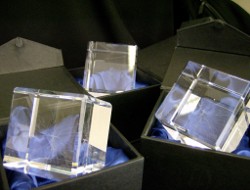
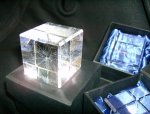

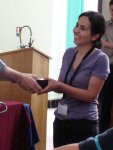
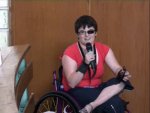
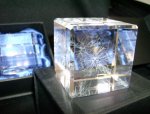



![Neuropôle de recherche francilien (NeRF) [Île-de-France Neuroresearch Hub] NeRF](IMG/png/nerf30.png)








